6.4 Multiple Forms of Memory: How the Past Returns
In 1977, neurologist Oliver Sacks interviewed a young man named Greg who had a tumor in his brain that wiped out his ability to remember day-
Although Greg was unable to make new memories, some of the new things that happened to him seemed to leave a mark. For example, Greg did not recall learning that his father had died, but he did seem sad and withdrawn for years after hearing the news. Similarly, HM could not make new memories after his surgery, but if he played a game in which he had to track a moving target, his performance gradually improved with each round (Milner, 1962). Greg could not consciously remember hearing about his father’s death, and HM could not consciously remember playing the tracking game, but both showed clear signs of having been permanently changed by experiences that they so rapidly forgot. In other words, they behaved as though they were remembering things while claiming to remember nothing at all. This suggests that there must be several kinds of memory, some that are accessible to conscious recall, and some that we cannot consciously access (Eichenbaum & Cohen, 2001; Schacter & Tulving, 1994; Schacter, Wagner, & Buckner, 2000; Squire & Kandel, 1999).
242
Explicit and Implicit Memory
What type of memory is it when you just “know how” to do something?
The fact that people can be changed by past experiences without having any awareness of those experiences suggests that there must be at least two different classes of memory (FIGURE 6.11). Explicit memory occurs when people consciously or intentionally retrieve past experiences. Recalling last summer’s vacation, incidents from a novel you just read, or facts you studied for a test all involve explicit memory. Indeed, anytime you start a sentence with “I remember…,” you are talking about an explicit memory. Implicit memory occurs when past experiences influence later behavior and performance, even without an effort to remember them or an awareness of the recollection (Graf & Schacter, 1985; Schacter, 1987). Implicit memories are not consciously recalled, but their presence is “implied” by our actions. Greg’s persistent sadness after his father’s death, even though he had no conscious knowledge of the event, is an example of implicit memory. So is HM’s improved performance on a tracking task that he didn’t consciously remember doing. So is the ability to ride a bike or tie your shoelaces or play guitar: You may know how to do these things, but you probably can’t describe how to do them. Such knowledge reflects a particular kind of implicit memory called procedural memory, which refers to the gradual acquisition of skills as a result of practice, or “knowing how” to do things.
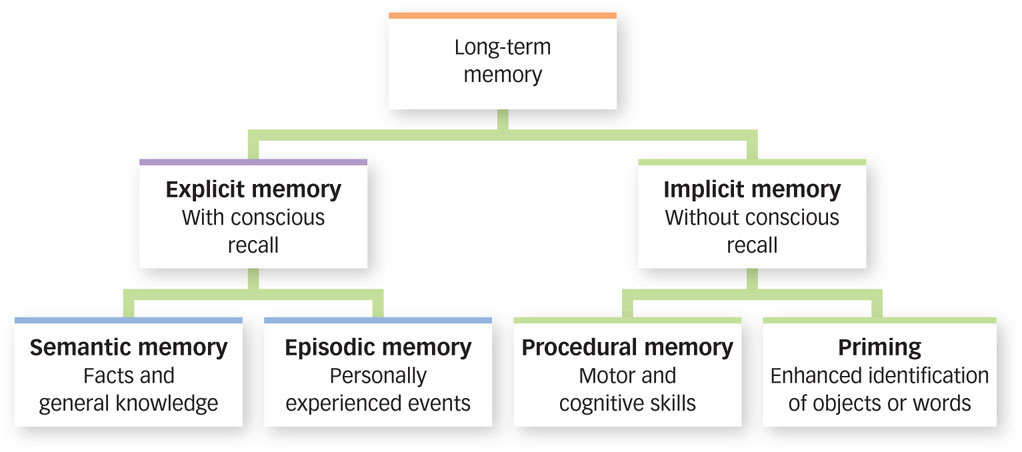
 Figure 6.11: Multiple Forms of Memory Explicit and implicit memories are distinct from each other. Thus, a person with amnesia may lose explicit memory, yet display implicit memory for material that she or he cannot consciously recall learning.
Figure 6.11: Multiple Forms of Memory Explicit and implicit memories are distinct from each other. Thus, a person with amnesia may lose explicit memory, yet display implicit memory for material that she or he cannot consciously recall learning.

One of the hallmarks of procedural memory is that the things you remember are automatically translated into actions. Sometimes you can explain how it is done (put one finger on the third fret of the E string, one finger…) and sometimes you can’t (get on the bike and…well, uh…just balance). The fact that people who have amnesia can acquire new procedural memories suggests that the hippocampal structures that are usually damaged in these individuals may be necessary for explicit memory, but they aren’t needed for implicit procedural memory. In fact, it appears that brain regions outside the hippocampal area (including areas in the motor cortex) are involved in procedural memory. The Learning chapter discusses this evidence further, where you will also see that procedural memory is crucial for learning various kinds of motor, perceptual, and cognitive skills.
Not all implicit memories are procedural or “how to” memories. For example, in one experiment, college students were asked to study a long list of words, including items such as avocado, mystery, climate, octopus, and assassin (Tulving, Schacter, & Stark, 1982). Later, explicit memory was tested by showing participants some of these words along with new ones they hadn’t seen and asking them which words were on the list. To test implicit memory, participants received word fragments and were asked to come up with a word that fit the fragment. Try the test yourself:
243
ch – – – – nk o – t – p – – – og – y – – – – l – m – te
How does priming make memory more efficient?
You probably had difficulty coming up with the answers for the first and third fragments (chipmunk, bogeyman) but had little problem coming up with answers for the second and fourth (octopus, climate). Seeing octopus and climate on the original list made those words more accessible later, during the fill-
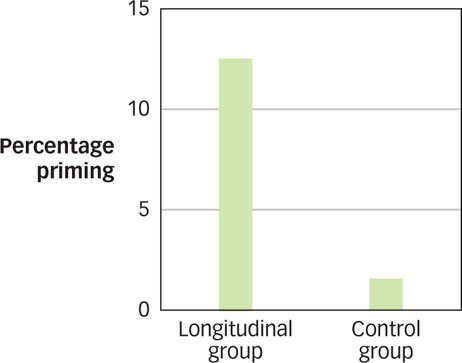
 Figure 6.12: Long-
Figure 6.12: Long-A truly stunning example of this point comes from a study by Mitchell (2006) in which participants first studied black-
As such, you’d expect amnesic individuals such as HM and Greg to show priming. In fact, many experiments have shown that amnesic individuals can show substantial priming effects–often as large as healthy, nonamnesic individuals–even though they have no explicit memory for the items they studied. These and other similar results suggest that priming, like procedural memory, does not require the hippocampal structures that are damaged in cases of amnesia (Schacter & Curran, 2000).
If the hippocampal region isn’t required for procedural memory and priming, what parts of the brain are involved? Experiments have revealed that priming is associated with reduced activity in various regions of the cortex that are activated when people perform an unprimed task. For instance, when research participants are shown the word stem mot _______ or tab _______ and are asked to provide the first word that comes to mind, parts of the occipital lobe involved in visual processing and parts of the frontal lobe involved in word retrieval become active. But if people perform the same task after being primed by seeing motel and table, there’s less activity in these same regions (Buckner et al., 1995; Schott et al., 2005). Something similar happens when people see pictures of everyday objects on two different occasions. On the second exposure to a picture, there’s less activity in parts of the visual cortex that were activated by seeing the picture initially. Priming seems to make it easier for parts of the cortex that are involved in perceiving a word or object to identify the item after a recent exposure to it (Schacter, Dobbins, & Schnyer, 2004; Wiggs & Martin, 1998). This suggests that the brain saves a bit of processing time after priming (see FIGURE 6.13).
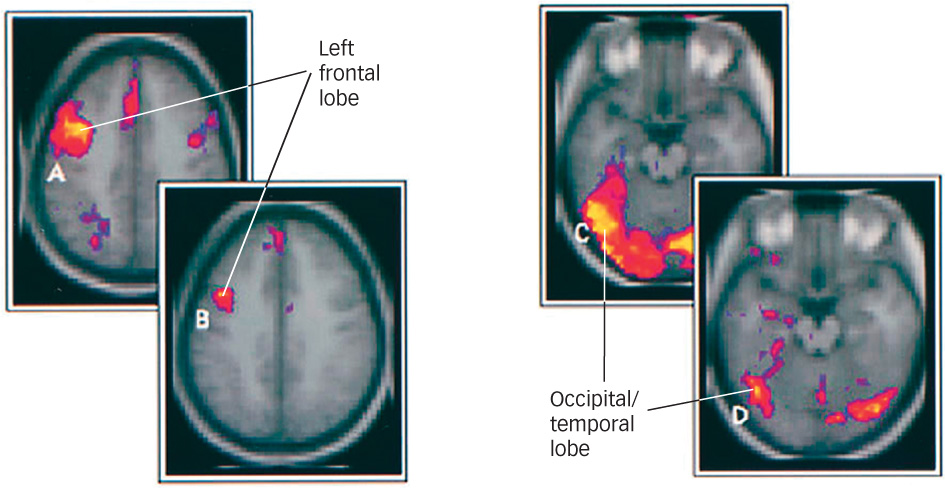
 Figure 6.13: Primed and Unprimed Processing of Stimuli Priming is associated with reduced levels of activation in the cortex on a number of different tasks. In each pair of fMRIs, the images on the upper left (A, C) show brain regions in the frontal lobe (A) and occipital/temporal lobe (C) that are active during an unprimed task (in this case, providing a word response to a visual word cue). The images on the lower right within each pair (B, D) show reduced activity in the same regions during the primed version of the same task.
Figure 6.13: Primed and Unprimed Processing of Stimuli Priming is associated with reduced levels of activation in the cortex on a number of different tasks. In each pair of fMRIs, the images on the upper left (A, C) show brain regions in the frontal lobe (A) and occipital/temporal lobe (C) that are active during an unprimed task (in this case, providing a word response to a visual word cue). The images on the lower right within each pair (B, D) show reduced activity in the same regions during the primed version of the same task.
244
Neuroimaging studies also indicate that different brain systems are involved in two distinct forms of priming: perceptual priming, which reflects implicit memory for the sensory features of an item (e.g., the visual characteristics of a word or picture), and conceptual priming, which reflects implicit memory for the meaning of a word or how you would use an object. Studies using fMRI indicate that perceptual priming depends primarily on regions toward the back of the brain, such as the visual cortex, whereas conceptual priming depends more on regions toward the front of the brain, such as the frontal lobes (Wig, Buckner, & Schacter, 2009). There is also some evidence that perceptual priming is associated primarily with the right cerebral hemisphere, whereas conceptual priming is associated with the left hemisphere (Schacter, Wig, & Stevens, 2007).
Semantic and Episodic Memory
Consider these two questions: (1) Why do we celebrate on July 4th? and (2) What is the most spectacular Fourth of July celebration you’ve ever seen? Every American knows the answer to the first question (we celebrate the signing of the Declaration of Independence on July 4, 1776), but we all have our own answers to the second. Although both of these questions require you to search your long-
What form of memory uses mental time travel?
Episodic memory is special because it is the only form of memory that allows us to engage in mental time travel, projecting ourselves into the past and revisiting events that have happened to us. This ability allows us to connect our pasts and our presents and construct a cohesive story of our lives. People who have amnesia can usually travel back in time and revisit episodes that occurred before they became amnesic, but they are unable to revisit episodes that happened later. For example, Greg couldn’t travel back to any time after 1969 because that’s when he stopped being able to create new episodic memories. But can people with amnesia create new semantic memories?
245
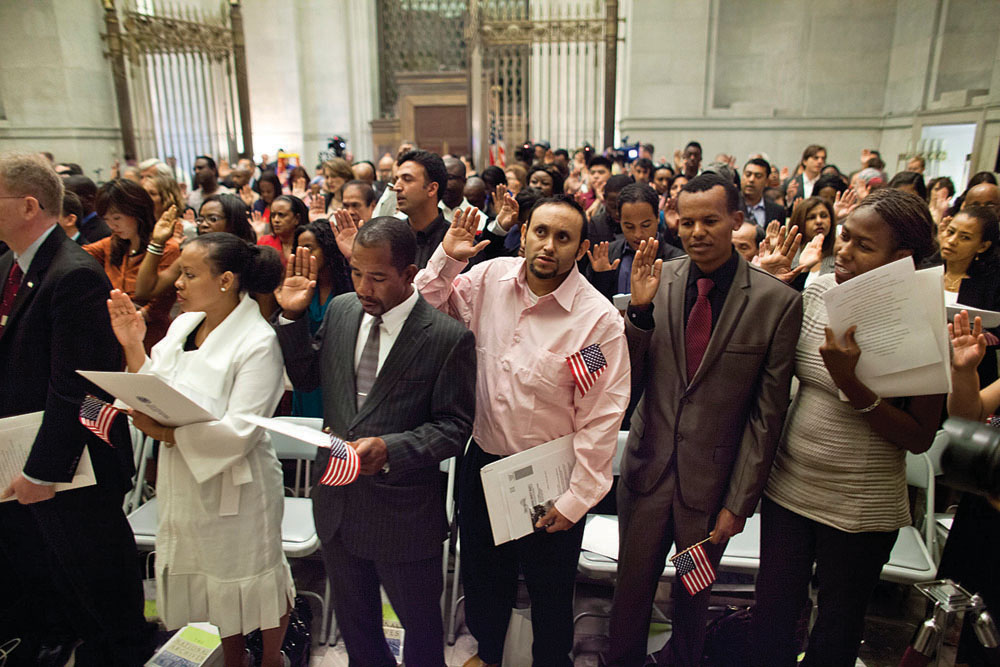
Researchers have studied three young adults who suffered damage to the hippocampus during birth as a result of difficult deliveries that interrupted oxygen supply to the brain (Brandt et al., 2009; Vargha-
Episodic Memory and Imagining the Future
We’ve already seen that episodic memory allows us to travel backward in time, but it turns out that episodic memory also plays a role in allowing to us to travel forward in time. An amnesic man known by the initials K.C. provided an early clue. K.C. could not recollect any specific episodes from his past, and when asked to imagine a future episode–such as what he might do tomorrow–he reported a complete “blank” (Tulving, 1985). Consistent with this observation, more recent findings from individuals with hippocampal amnesia reveal that some of them have difficulty imagining new experiences, such as sunbathing on a sandy beach (Hassabis et al., 2007), or events that might happen in their everyday lives (Race, Keane, & Verfaellie, 2011). Something similar happens with aging. When asked either to recall episodes that actually occurred in their pasts or imagine new episodes that might occur in their futures, older adults provided fewer details about what happened, or what might happen, than did college students (Addis, Wong, & Schacter, 2008; Schacter, Gaesser, & Addis, 2012). Consistent with these findings, neuroimaging studies reveal that a network of brain regions known to be involved in episodic memory–including the hippocampus–shows similarly increased activity when people remember the past and imagine the future (Addis, Wong, & Schacter, 2007; Okuda et al., 2003; Schacter, Addis, et al., 2012; Szpunar, Watson, & McDermott, 2007; see FIGURE 6.14).
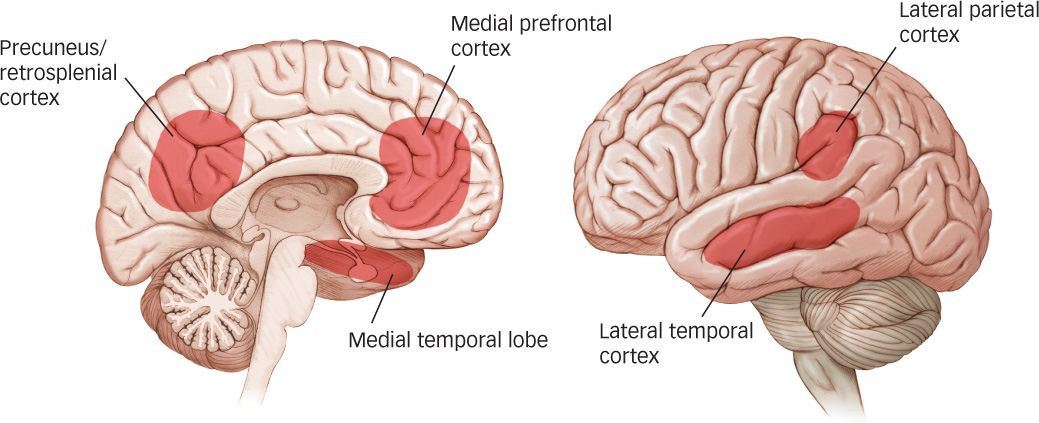
 Figure 6.14: Remembering the Past and Imagining the Future Depend on a Common Network of Brain Regions A common brain network is activated when people remember episodes that actually occurred in their personal pasts and when they imagine episodes that might occur in their personal futures. This network includes the hippocampus, a part of the medial temporal lobe long known to play an important role in episodic memory (Schacter, Addis, & Buckner, 2007).
Figure 6.14: Remembering the Past and Imagining the Future Depend on a Common Network of Brain Regions A common brain network is activated when people remember episodes that actually occurred in their personal pasts and when they imagine episodes that might occur in their personal futures. This network includes the hippocampus, a part of the medial temporal lobe long known to play an important role in episodic memory (Schacter, Addis, & Buckner, 2007).
246
How does episodic memory help us imagine our futures?
Taken together, these observations strongly suggest that we rely heavily on episodic memory to envision our personal futures (Schacter, Addis, & Buckner, 2008; Szpunar, 2010). Episodic memory is well-
Social Influences on Remembering: Collaborative Memory
So far we’ve focused mainly on memory in individuals functioning on their own. But this is an incomplete picture that is missing something important: other people. Remembering serves important social functions. Getting together with friends or family to talk about memories of shared experiences is a familiar and enjoyable activity for most of us. When we post photos of parties or vacations on Facebook, we are effectively sharing memories with our friends. And we are quick to communicate our memories to others: In a diary study where college students recorded a memorable event each day for a week, they disclosed 62% of these events to others before the end of the day on which the event occurred (Pasupathi, McLean, & Weeks, 2009). Sharing memories with others can strengthen them (Hirst & Echterhoff, 2012), but we’ve already seen that talking about some aspects of a memory but omitting other related events, can also produce retrieval-
In a typical collaborative memory experiment, participants first encode a set of target materials, such as a list of words, on their own (just like in the traditional memory experiments that we’ve already considered). Things start to get interesting at the time of retrieval, when participants work together in small groups (usually two or three participants) to try to remember the target items. The number of items recalled by this group can then be compared with the number of items recalled by individuals who are trying to recall items on their own, without any help from others. The collaborative group typically recalls more target items than any individual (Hirst & Echterhoff, 2012; Weldon, 2001), suggesting that collaboration benefits memory. That makes a lot of sense and generally fits with our intuitions about what should happen in such a situation (Rajaram, 2011). For example, Tim might recall an item that Emily forgot, and Eric might remember items that neither Tim nor Emily recalled, so the sum total of the group will exceed what any one person can recall.
247
But things get really interesting when we compare the performance of the collaborative group to the performance of what is called a nominal group: the combined recall of several individuals recalling target items on their own. Let’s consider a nominal group of three compared with a collaborative group of three. In the nominal group, let’s assume that after studying a list of eight words, Tim recalls items 1, 2, and 8, Emily recalls items 1, 4, and 7, and Eric recalls items 1, 5, 6, and 8. Functioning on their own, Tim, Emily, and Eric recalled in combination seven of the eight items that were presented (nobody recalled item 3). The surprising finding now reported by many studies is that the collaborative group typically recalls fewer items than the nominal group; that is, when they remember together, Tim, Emily, and Eric will come up with fewer total items than when they remember on their own (Basden et al., 1997; Hirst & Echterhoff, 2012; Rajaram, 2011; Rajaram & Pereira-
Why does a collaborative group typically recall fewer items than a nominal group?
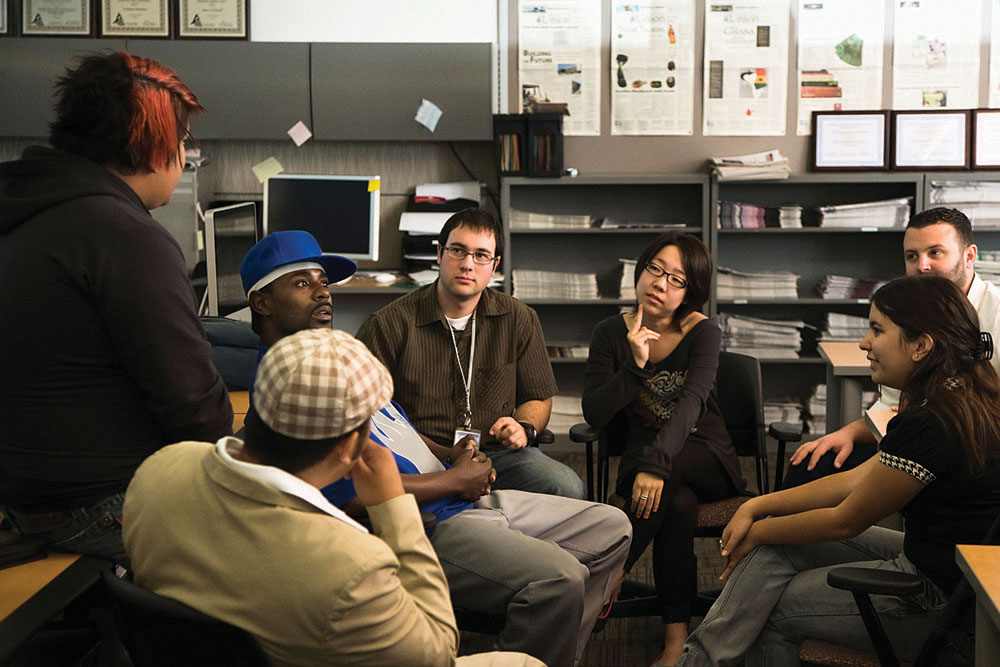
What’s going on here? Most people believe that, based on intuition, working together should increase rather than decrease recall (Rajaram, 2011). Why does it turn out otherwise? One possibility is that in a group, some individuals are prone to “social loafing”: they let others do the work and don’t pull their own weight. Although social loafing is well known to occur in groups (Karau & Williams, 1993), memory researchers have tested this account of collaborative inhibition and rejected it (Barber, Rajaram, & Fox, 2012). A more likely account is that when recalling items together, the retrieval strategies used by individual members of the group disrupt those used by others (Basden et al., 1997; Hirst & Echterhoff, 2012; Rajaram, 2011). For example, suppose that Tim goes first and recalls items in the order that they were presented. This retrieval strategy may be disruptive to Emily, who prefers to recall the last item first and then work backward through the list.
But collaborative recall has other benefits. When individuals recall information together in a group, they are exposed to items recalled by others they may not recall themselves, which improves their memory when they are retested at a later time (Blumen & Rajaram, 2008). And when group members discuss what they have recalled, they can help each other to correct and reduce memory errors (Ross, Blatz, & Schryer, 2008). These observations fit with earlier work showing that couples in close relationships often rely on collaborative remembering (also called transactive memory; Wegner, Erber, & Raymond, 1991), where each member of the couple remembers certain kinds of information that they can share with the other. (Can you rely on your computer for collaborative remembering? See The Real World: Is Google Hurting our Memories?) So, next time you are sharing memories of a past activity with friends, you will be shaping your memories for both better and worse.
248
THE REAL WORLD: Is Google Hurting our Memories?
Take some time to try to answer a simple question before returning to reading this box: What country has a national flag that is not rectangular? Now let’s discuss what went through your mind as you searched for an answer (the correct one is Nepal). Did you start thinking about the shapes of national flags? Take a mental walk through a map of the world? Or did you think instead about computers–more specifically, about typing the question into Google? There was probably a time not too long ago when most people would have tried to conjure up images of national flags or take a mental world tour, but recent research conducted in the lab of one of your textbook authors indicates that nowadays, most of us think about computers and Google searches when confronted with questions of this kind (Sparrow, Liu, & Wegner, 2011).

Sparrow et al. found that people were slower to name the color in which a computer word (e.g., Google, internet, Yahoo) was printed than the color in which a noncomputer word (e.g., Nike, table, Yoplait) was printed after they were given difficult general knowledge questions (like the one about nonrectangular flags) than after they were given easy questions to which they knew the answers. The slow color naming to computer words suggests that people were thinking about things related to computers after being given difficult questions, which interfered with their ability to name the color in which the word was printed. The researchers concluded that we are now so used to searching for information on Google when we don’t immediately know the answer to a question that we immediately think of computers, rather than searching our memories. Thinking about computers when faced with a tough question makes sense: We will probably come up with the answer more quickly if we do a Google search than if we think about what different flags look like. But this result also raises troubling questions: Is reliance on computers and the internet having an adverse effect on human memory? If we rely on Google for answers, are we unknowingly making our memories obsolete?
Sparrow et al. conducted additional experiments aimed at addressing these kinds of questions. In one of them, they found that participants had a harder time remembering bits of trivia (“An ostrich’s eye is bigger than its brain”) that they typed into a computer when they were told that the computer would save their answers than when they were told that the answers would be erased. But in later experiments, they found that when people saved information to one of several folders on a computer, they were often able to remember where they saved it even when they did not remember the information itself. People seemed to be using the computer in an efficient way to help remember facts, while relying on their own memories to recall where those facts could be found. Sparrow and colleagues suggested that people may be adapting their memories to the demands of new technology, relying on computers in a way that is similar to how we sometimes rely on other people (friends, family members, or colleagues) to remember things that we may not remember ourselves. This is similar to what we discussed as collaborative memory, and just as collaborative remembering with other people has both helpful and harmful effects, so does collaborative remembering with our computers.
 Long-
Long-term memory consists of several different forms. Explicit memory is the act of consciously or intentionally retrieving past experiences, whereas implicit memory refers to the unconscious influence of past experiences on later behavior and performance, such as procedural memory and priming. Procedural memory involves the acquisition of skills as a result of practice, and priming is a change in the ability to recognize or identify an object or a word as the result of past exposure to it.  People who have amnesia are able to retain implicit memory, including procedural memory and priming, but they lack explicit memory.
People who have amnesia are able to retain implicit memory, including procedural memory and priming, but they lack explicit memory. Episodic memory is the collection of personal experiences from a particular time and place; it allows us both to recollect the past and imagine the future. Semantic memory is a networked, general, impersonal knowledge of facts, associations, and concepts.
Episodic memory is the collection of personal experiences from a particular time and place; it allows us both to recollect the past and imagine the future. Semantic memory is a networked, general, impersonal knowledge of facts, associations, and concepts. Collaborative memory refers to remembering in groups. Collaborative remembering can both impair memory (collaborative inhibition) and enhance it by exposing people to new information and helping to correct errors.
Collaborative memory refers to remembering in groups. Collaborative remembering can both impair memory (collaborative inhibition) and enhance it by exposing people to new information and helping to correct errors.
249